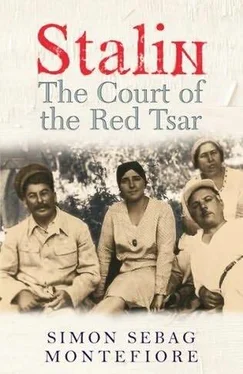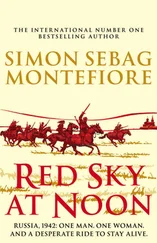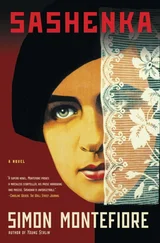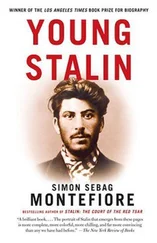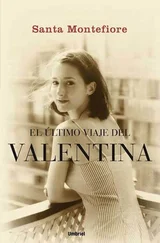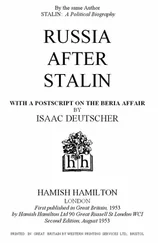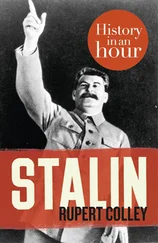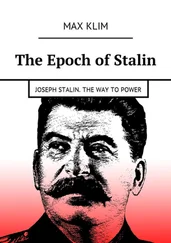Days later, Stalin arrived only to be told that Gorky was too ill to see him: “Alexei Mikhailovich, we visited you at two in the morning,” he wrote. “Your pulse was they say 82. The doctors did not allow us to come in to you. We submitted. Hello from all of us, a big hello. Stalin.” Molotov and Voroshilov signed underneath.
Gorky started to spit blood and died on 18 June, of TB, pneumonia and heart failure. Later it was claimed that his doctors and Yagoda had murdered him deliberately: they certainly confessed to his murder. His death was convenient before Zinoviev’s trial but his medical records in the NKVD archives suggest that he died naturally. 6
Yagoda was skulking in the dining room at Gorky’s house but Stalin had already turned against him. “And what’s that creature hanging around here for? Get rid of him.” 7
* * *
Finally in July, Zinoviev asked to be able to talk to Kamenev on his own. Then they demanded to speak to the Politburo: if the Party would guarantee there would be no executions, they would confess. Voroshilov was itching to get at the “scum”: when he received some of the testimonies against them, he wrote to Stalin that “these bad people… all typical representatives of petit bourgeois with the face of Trotsky… are finished people. There’s no place for them in our country and no place among the millions ready to die for the Motherland. This scum must be liquidated absolutely… we need to be sure the NKVD starts the purge properly…” Here, then, was one leader who genuinely seemed to approve of a terror and the liquidation of the former oppositions. On 3 July, Stalin replied to “dear Klim, did you read the testimonies… ? How do you like the bourgeois puppies of Trotsky… ? They wanted to wipe out all the members of the Politburo… Isn’t it weird? How low people can sink? J.St.”
Yagoda accompanied these two broken men on the short drive from the Lubianka to the Kremlin, where they had both once lived. When they arrived in the room where Kamenev had chaired so many Politburo meetings, they discovered that only Stalin, Voroshilov and Yezhov were present. Where was the rest of the Politburo?
Stalin replied that he and Voroshilov were a commission of the Politburo. Given Klim’s venom, it is easy to see why he was there, but where was Molotov? Perhaps the punctilious Iron-Arse was worried about the etiquette of lying to Old Bolsheviks: he certainly did not object to killing people.
Kamenev begged the Politburo for a guarantee of their lives.
“A guarantee?” replied Stalin, according to Orlov’s version. “What guarantee can there be? It’s simply ridiculous! Maybe you want an official treaty certified by the League of Nations? Zinoviev and Kamenev forget they’re not in a market-place haggling over a stolen horse but at the Politburo of the Bolshevik Communist Party. If an assurance by the Politburo is not enough, I don’t see any point in talking further.”
“Zinoviev and Kamenev behave as if they’re in a position to make conditions to the Politburo,” exclaimed Voroshilov. “If they had any common sense, they’d fall to their knees before Stalin…”
Stalin proposed three reasons why they would not be executed—it was really a trial of Trotsky; if he had not shot them when they were opposing the Party, then why shoot them when they were helping it; and finally, “the comrades forget that we are Bolsheviks, disciples and followers of Lenin, and we don’t want to shed the blood of Old Bolsheviks, no matter how grave their past sins…”
Zinoviev and Kamenev wearily agreed to plead guilty, provided there were no shootings and their families were protected.
“That goes without saying,” Stalin finished the meeting. 8
Stalin set to work on the script for the Zinoviev trial, revelling in his hyperbolic talent as a hack playwright. The new archives reveal how he even dictated the words of the new Procurator-General, Andrei Vyshinsky, who kept notes of his leader’s perorations. 9
Stalin issued a secret circular of 29 July which announced that a terrorist leviathan named the “United Trotskyite-Zinovievite Centre” had attempted to assassinate Stalin, Voroshilov, Kaganovich, Kirov, Sergo, Zhdanov and others. These lists of purported targets became a bizarre honour since inclusion signified proximity to Stalin. One can imagine the leaders checking the list like schoolboys rushing to the noticeboard to make sure they are in the football team. Significantly, Molotov was not on the team, which was interpreted as a sign of opposition to the Terror but it seems he was indeed temporarily out of favour because of a different disagreement with Stalin. Molotov boasted, “I’d always supported the measures taken,” but there is one intriguing hint in the archives that Molotov was under fire from Yezhov. The NKVD had arrested the German nurse of his daughter Svetlana Molotova [90] Many of the ruling families employed ethnic Germans as housekeepers and nannies: Carolina Til managed Stalin’s house; another Volga German ran Molotov’s and the Berias employed Ella as their nanny-housekeeper. They would all prove vulnerable to the anti-German Terror of 1937.
and the Premier had grumbled to Yagoda. A Chekist denounced Molotov for “improper behaviour… Molotov behaved badly.” On 3 November, Yezhov sent Molotov the denunciation, perhaps a shot across his bows. 10
Yezhov was Stalin’s closest associate in the days before the trial while Yagoda, now in disfavour for his resistance to it, was received only once. Stalin complained about his work: “You work poorly. The NKVD suffers a serious disease.” Finally he called Yagoda, shouting that he would “punch him in the nose” if he did not pull himself together. We have Stalin’s notes from his 13 August meetings with Yezhov, which catch his mood. In one, he considers sacking an official: “Get him out? Yes, get him out! Talk with Yezhov.” Again and again: “Ask Yezhov.” 11
* * *
The first of the famous show trials opened on 19 August in the October Hall upstairs in the House of Unions. The 350 spectators were mainly NKVD clerks in plain clothes, foreign journalists and diplomats. On a raised dais in the centre, the three judges, led by Ulrikh, sat on portentous throne-like chairs covered in red cloth. The real star of this theatrical show, the Procurator-General Andrei Vyshinsky, whose performance of foaming ire and articulate pedantry would make him a European figure, sat to the audience’s left. The defendants, sixteen shabby husks, guarded by NKVD troopers with fixed bayonets, sat to the right. Behind them was a door that led to the suite that might be compared to the “celebrity hospitality green room” in television studios. Here in a drawing room with sandwiches and refreshments sat Yagoda who could confer with Vyshinsky and the defendants during the trial.
Stalin was said to be lurking in a recessed gallery with darkened windows at the back where the orchestras once played for aristocratic quadrilles and whence puffs of pipe smoke were alleged to be emanating.
On the 13th, six days before the trial began, Stalin departed by train for Sochi, after a meeting with Yezhov. It is a mark of the impenetrable secrecy of the Soviet system that it has taken over sixty years for anyone to discover that Stalin was actually far away, though he followed the legal melodrama almost as closely as if he had been listening to it in his office. Eighty-seven NKVD packages of interrogations plus records of confrontations and the usual pile of newspapers, memos and telegrams arrived at the wicker table on the veranda.
Kaganovich and Yezhov checked every detail with Stalin. The protégé was now more powerful than his former patron—Yezhov signed his name ahead of Kaganovich in every telegram. While the will of the great actor-manager controlled all from afar, the two in Moscow doubled as PR-men and impresarios. On the 17th, Kaganovich and Yezhov reported to the Khozyain that “we’ve fixed the press coverage… in the following manner: 1. Pravda and Izvestiya to publish a page-length account of the trial daily.” On the 18th, Stalin ordered the trial to proceed next day.
Читать дальше
